Following the tutorial propeller aircraft design (1/2)
Understand and master the design of an aircraft screew propeller 2/2:
knowing:- The optimal speed of the engine: 8000 rpm (One that offers the most power consuming less energy, it is the motor's design rotational speed )
- The torque of our engine at this speed is 1,9 N.m
- the speed of our aircraft in cruise flight: 180 km/h
- the drag of our plane: 30 newtons
- the maximum length of our propeller blade: 140 mm
The parameters available to us to optimize our propeller are:
- The blade number (see this recall on the parameters optimization of the number of blade)
- The distribution of the chord (see this recall on the parameters optimization of the distribution of chord)
- the shape of the profiles (see this recall on the parameters optimization of the profiles)

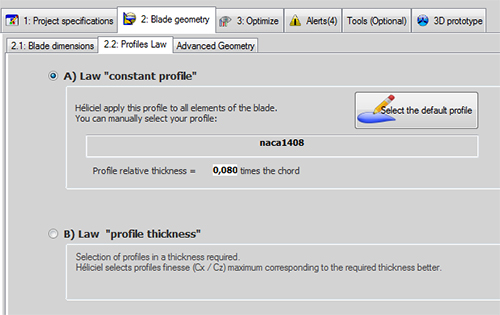
Click on "choose another profile" to display the database profiles, under the tab "database" grid profile data can be sorted by clicking the column header.The header cz_f_max indicates profiles lift coefficients at the best lift/drag ratio.Click ont this header to sort the grid according the best CL. 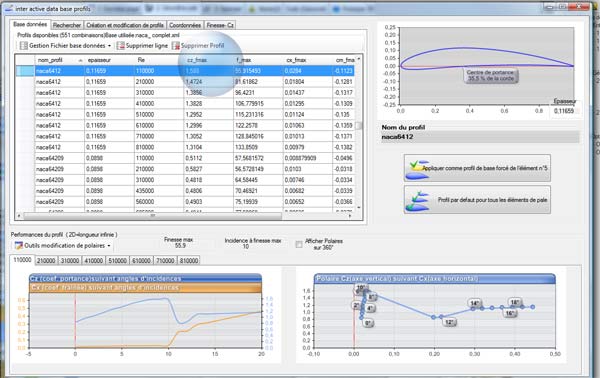

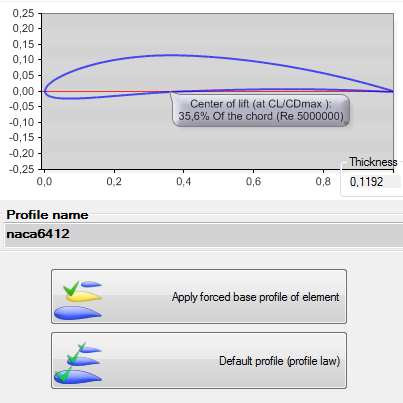

To reduce torque without changing the speed we could go back to the database and find a profile with a lower Cd (The drag coefficient is largely responsible for the torque) , the same way that we have done to look for a lift coefficient stronger. But we are in a tutorial, so we will choose to reduce the number of blade to explore other levers.As the thrust is more important than what we need, take off a few blades, 7 is a bit much , and it will save money: Tab 3 "Optimize" we can change the number of blades:


so let's apply to 3 blades and rebuild: ![]() , résults:
, résults:
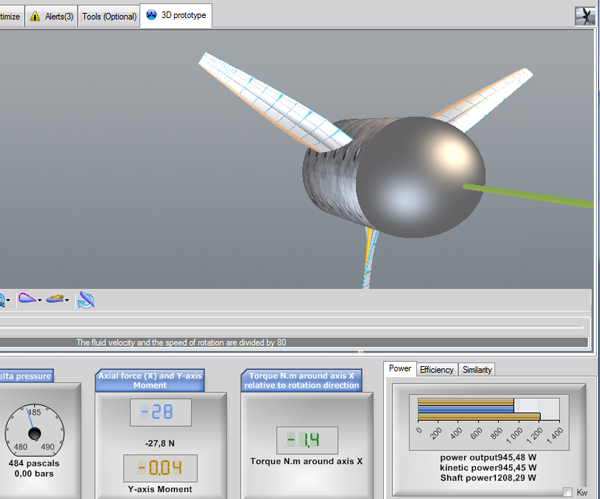
A blade more? no, too expensive, and we understand how changing the number of blade varies our performance, so let's try an other lever:Modify slightly the geometry of our blade: to increase thrust, we can increase slightly the surface of the blade by modifying the chords distribution:
- faite glisser le curseur "distribution cordes" jusqu'à afficher "Ajouter 0.0400x cordes el:2" :

This slider controls the equation, distribution of cords, he is sensitive, if youcan't find this equation, click " linearize " to restart from a linear cord, and repeat the operation:
![]()

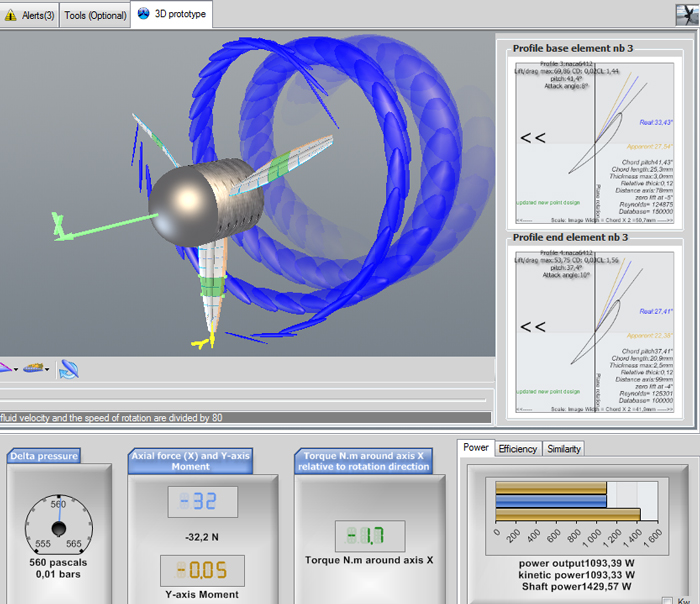
We have seen here how to adapt our propeller to operating conditions imposed, but the propulsive efficiency of our propeller is 0.76. A profile can work on, perhaps, slightly increase the efficiency..
The levers are multiple, to optimize a propeller.There is no magic formula, because the specifications are as varied as the goals. HELICIEL combines the functions to test hypotheses optimization we want to follow, but the choice of compromise is infinite and yours.
see: multiple analysis, a tool for editing curves to test the propeller
return to Tutorial design propeller plane (1)

 Global site map
Global site map Mecaflux
Mecaflux Tutorials Mecaflux Pro3D
Tutorials Mecaflux Pro3D Tutorials Heliciel
Tutorials Heliciel Mecaflux Store
Mecaflux Store Compare software functions
Compare software functions Quotes, Orders, Payment Methods
Quotes, Orders, Payment Methods project technical studies
project technical studies